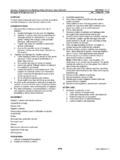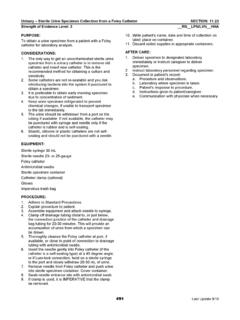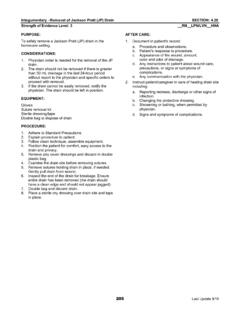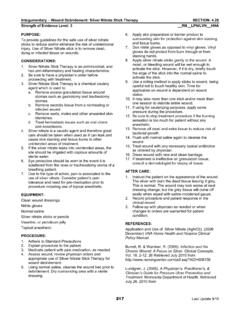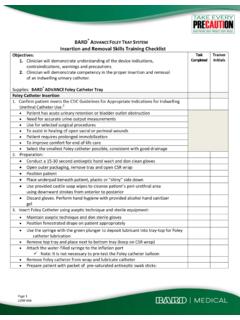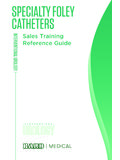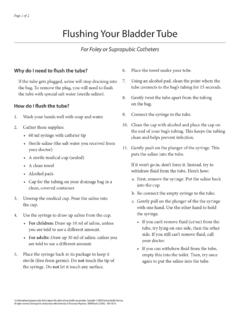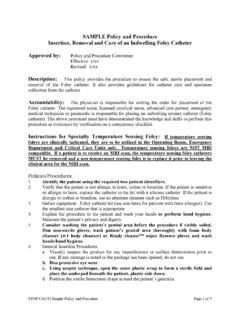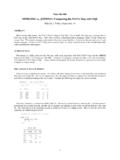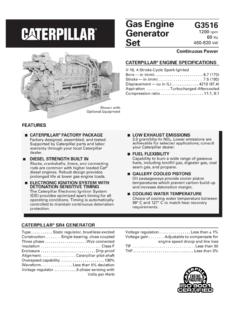Transcription of SECTION 11: URINARY: Sterile Urine Specimen …
1 urinary Sterile Urine Specimen collection from a foley Catheter SECTION : Strength of Evidence Level: 3 __RN__LPN/LVN__HHA PURPOSE: To obtain a Urine Specimen from a patient with a foley catheter for laboratory analysis. CONSIDERATIONS: 1. The only way to get an uncontaminated Sterile Urine Specimen from a urinary catheter is to remove old catheter and insert new catheter. This is the recommended method for obtaining a culture and sensitivity. 2. Some catheters are not re-sealable and you risk introducing bacteria into the system if punctured to obtain a Specimen . 3. It is preferable to obtain early morning Specimen due to concentration of sediment.
2 4. Keep Urine Specimen refrigerated to prevent chemical changes, if unable to transport Specimen to the lab immediately. 5. The Urine should be withdrawn from a port on the tubing if available. If not available, the catheter may be punctured with syringe and needle only if the catheter is rubber and is self-sealing. 6. Silastic, silicone or plastic catheters are not self-sealing and should not be punctured with a needle. EQUIPMENT: Sterile syringe 30 mL Sterile needle 23- or 25-gauge foley catheter Antimicrobial swabs Sterile Specimen container Catheter clamp (optional) Gloves Impervious trash bag PROCEDURE: 1.
3 Adhere to Standard Precautions. 2. Explain procedure to patient. 3. Assemble equipment and attach needle to syringe. 4. Clamp off drainage tubing distal to, or just below, the connection junction of the catheter and drainage bag tubing for 20-30 minutes. This will provide an accumulation of Urine from which a Specimen can be drawn. 5. Thoroughly cleanse the foley catheter at port, if available, or close to point of connection to drainage tubing with antimicrobial swabs. 6. Insert the needle gently into foley catheter (if the catheter is a self-sealing type) at a 45 degree angle, or if Luer-lock connection, twist on a Sterile syringe to the port and slowly withdraw 20-30 mL of Urine .
4 7. Remove needle from foley catheter and push Urine into Sterile Specimen container. Cover container. 8. Swab needle entrance site with antimicrobial swab. 9. If clamp is used, it is IMPERATIVE that the clamp be removed. 10. Write patient's name, date and time of collection on label; place on container. 11. Discard soiled supplies in appropriate containers. AFTER CARE: 1. Deliver Specimen to designated laboratory immediately or instruct caregiver to deliver Specimen . 2. Instruct laboratory personnel regarding Specimen . 3. Document in patient's record: a. Procedure and observations.
5 B. Laboratory where Specimen is taken. c. Patient's response to procedure. d. Instructions given to patient/caregiver. e. Communication with physician when necessary. 491 Last Update 9/10492 Last Update 9/10
